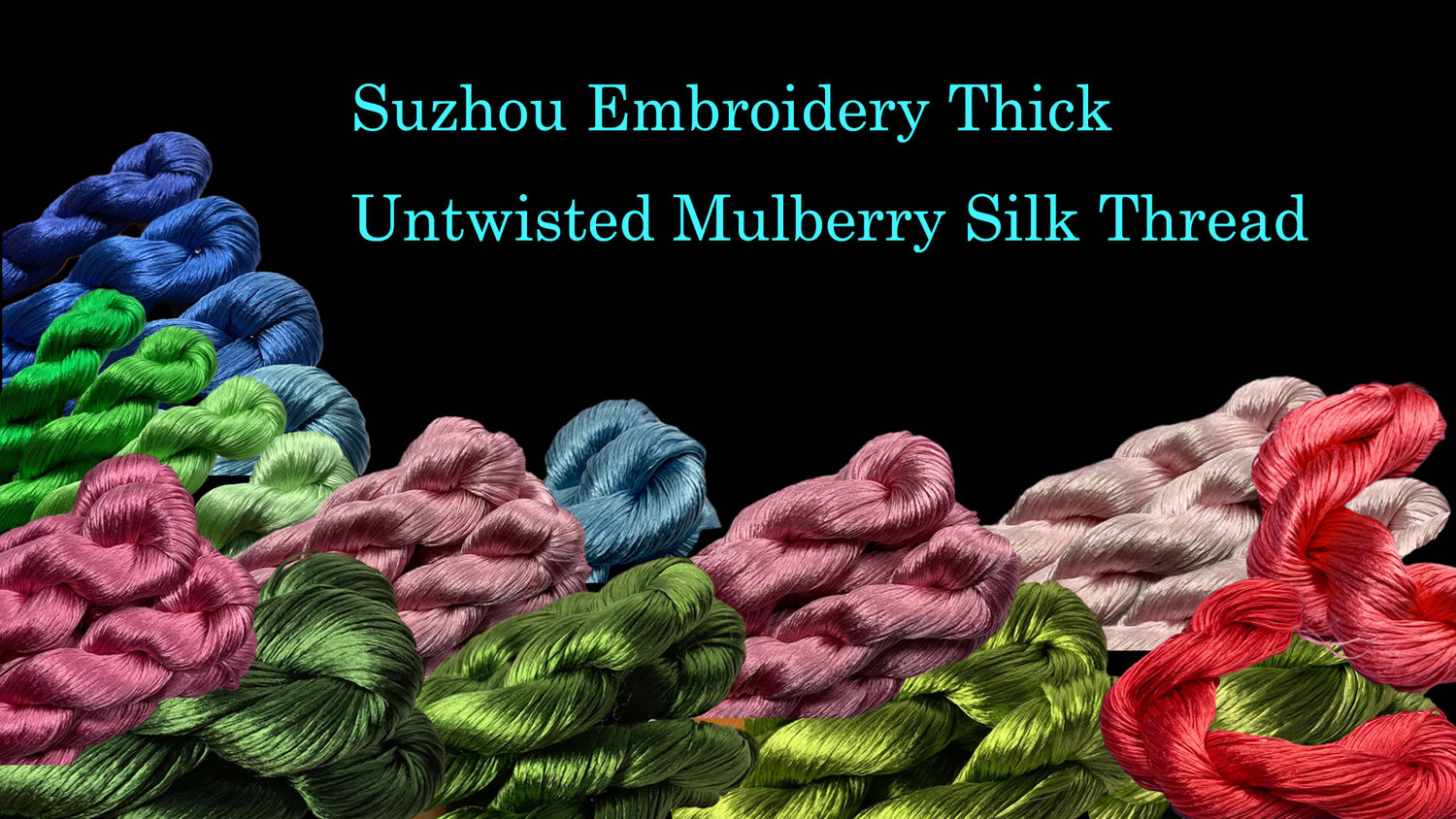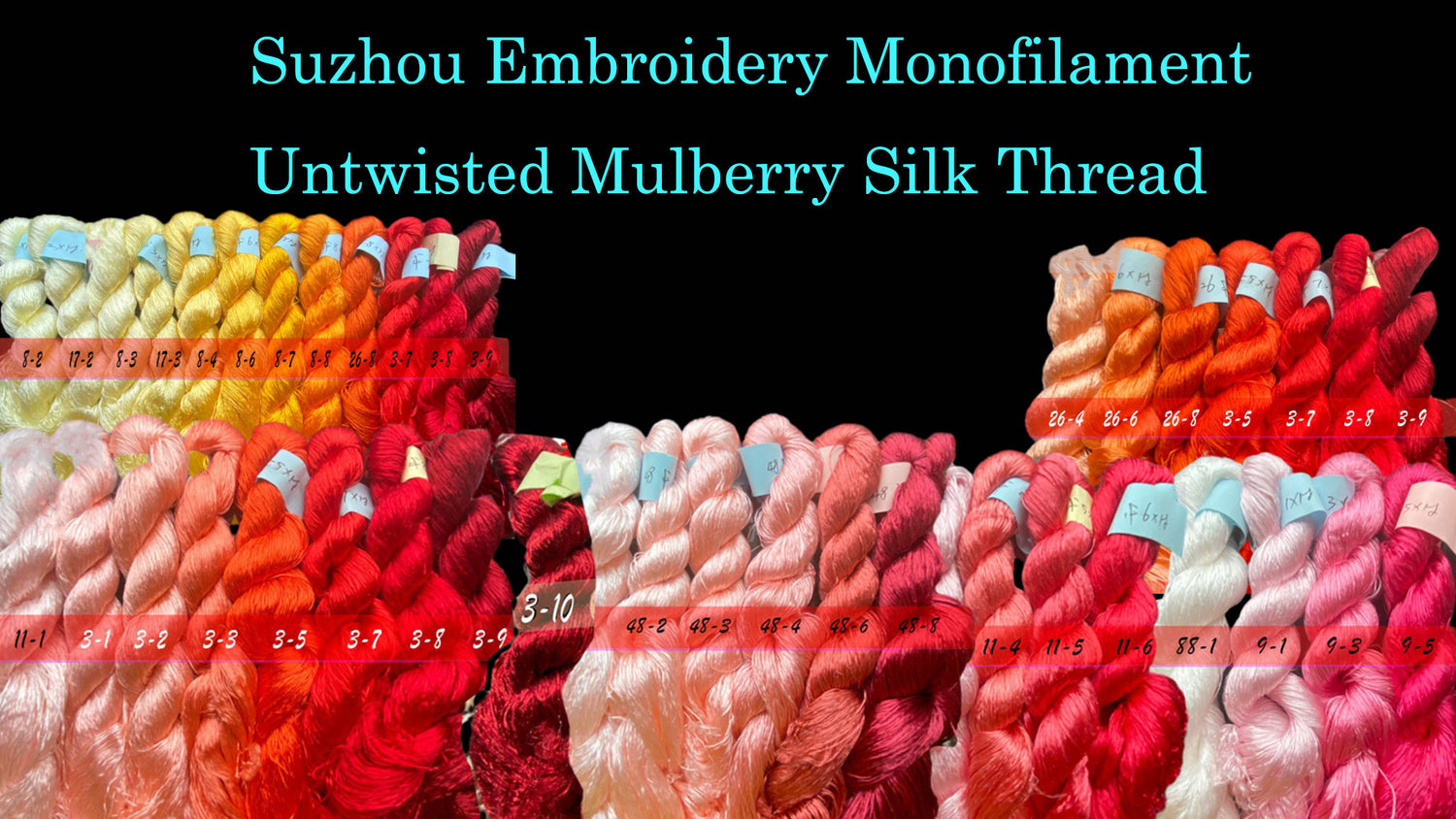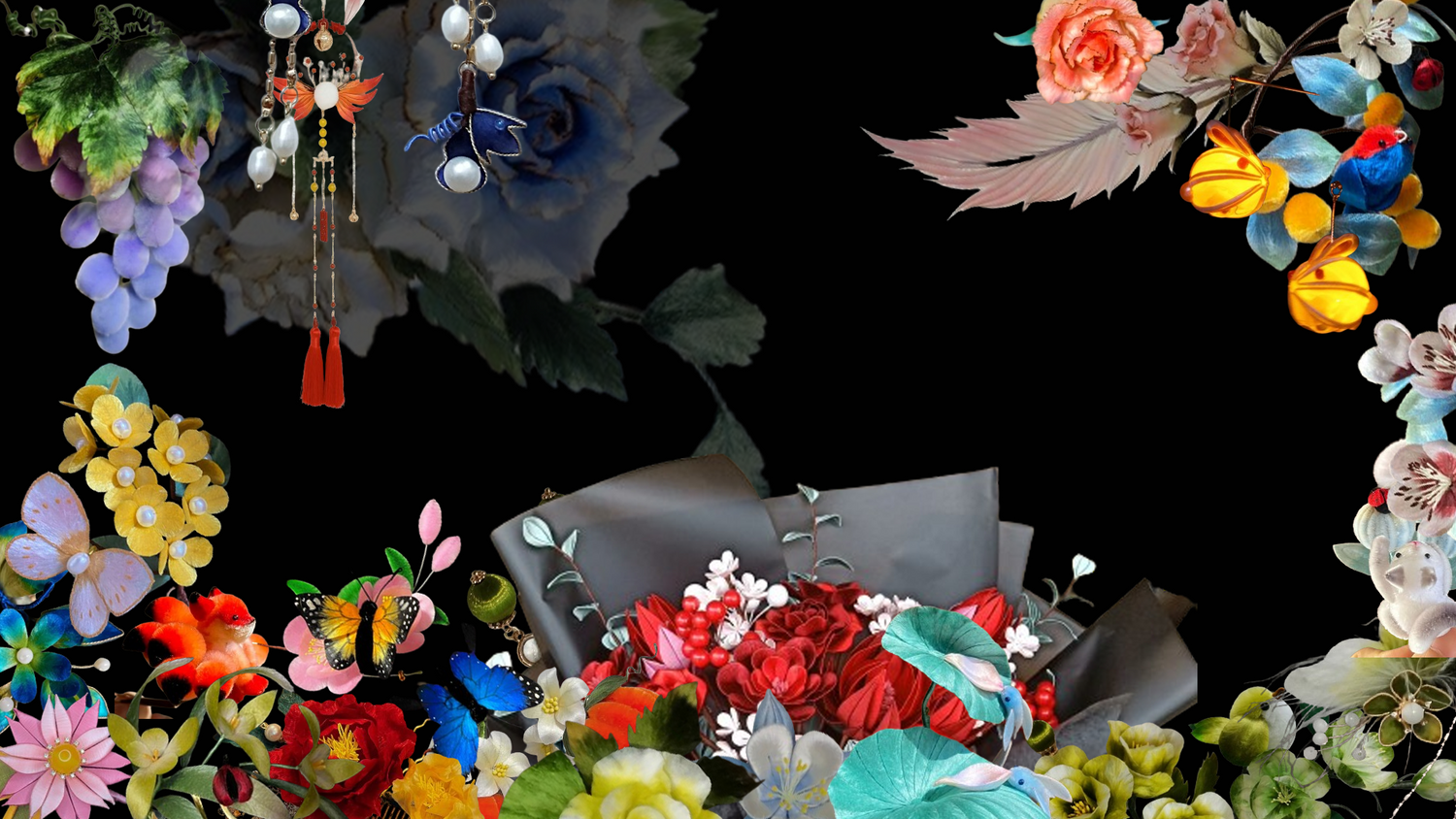
Classification of Ronghua(Velvet Flowers) - Thin Velvet Strips
Share
Ronghua(Velvet Flowers) are mainly divided into four major categories: velvet ball style, thick velvet strip style, thin velvet strip style, and flat clamp style. These four major categories are further divided into several subcategories.
Usually, artists will use multiple techniques according to their needs in a work, and will freely adjust according to the shape of the work. The techniques of these four major categories in the combing and twisting stages are similar, and detailed tutorials have been introduced in previous articles, so they will not be repeated here. The techniques after twisting are different for each category, so our later tutorials will be separated.
To make thin velvet strip flowers, both Suzhou embroidery thread and Hunan embroidery thread can be used, but the texture of the two threads may be slightly different. The finished product of Suzhou embroidery thread has a stronger velvet feel, better gloss, and is more delicate, while the finished product of Hunan embroidery thread has a texture like ice sand.
The plasticity of thin velvet strips is stronger, the color matching is more bright and generous, but it requires higher technical requirements for craftsmen, and it is time-consuming and laborious to trim, and the number of velvet strips needed to make a complete product is also more, so the price is high. In ancient China, it was mostly used by royal nobles.
Below are some examples:
The headdress in the above picture is a very classic style in traditional Ronghua(Velvet Flowers). The picture shows pomegranate, peach, Buddha’s hand melon, and flying phoenix. The pomegranate symbolizes having many children, the peach symbolizes longevity, the Buddha’s hand melon symbolizes happiness, and the phoenix symbolizes nobility, peace, and luck. This headdress is often worn by married adult women. The technique used is the thin velvet strip technique (the material is Suzhou embroidery thread)

The above picture uses the thin velvet strip technique (the material is Hunan embroidery thread)

The above picture uses the thin velvet strip technique (the material is Suzhou embroidery thread)

The petals of the sunflower in the above picture use the thin velvet strip technique (the material is Hunan embroidery thread), and the leaves use the flat velvet strip technique (the material is Hunan embroidery thread)

The acorn and leaves in the above picture all use the thin velvet strip technique (the material is Hunan embroidery thread)

The flowers and leaves in the above picture all use the thin velvet strip technique (the material is Suzhou embroidery thread)

The above picture is a palace flower worn by noble women of the Qing Dynasty. The original is now in the Beijing Palace Museum. The picture is a replica. The technique used is the thin velvet strip technique (the material is Suzhou embroidery thread)
The flowers and leaves in the above picture use the thin velvet strip technique (the material is Hunan embroidery thread)

The lotus and leaves in the above picture use the thin velvet strip technique (the material is Suzhou embroidery thread), and the white small flowers use the flat velvet strip technique (the material is Suzhou embroidery thread)









